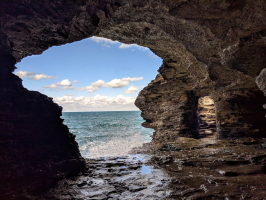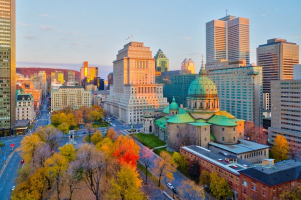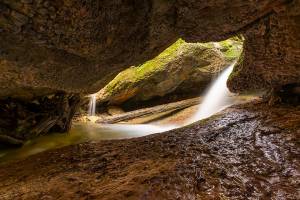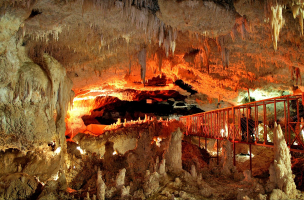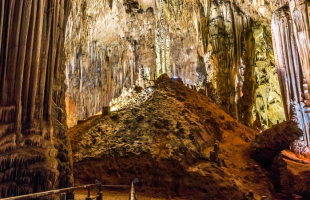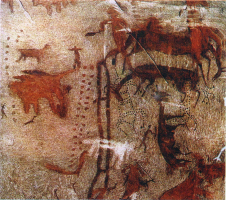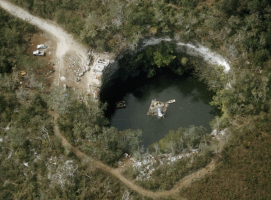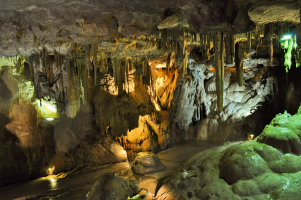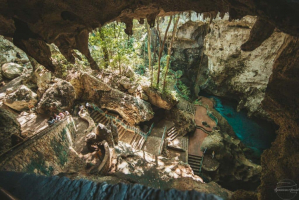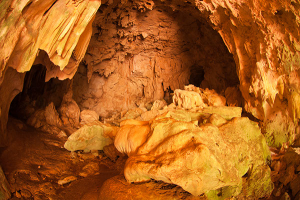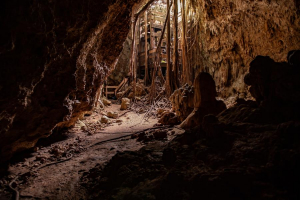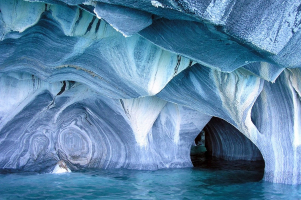Top 6 Largest Caves in Canada
Canada is the second-largest country in the world and has a developed economy with skyscrapers and the vibrant pace of a modern industrial city. Not only that, ... read more...but this country also possesses world-famous landscapes and beauty spots, especially caves. Without further ado, let's have a look at the largest caves in Canada now!
-
Wells Gray Park Cave stands at the top of the list of the biggest caves in Canada. A Canadian government team was evaluating caribou numbers by helicopter in the spring of 2018, when the pilot, Ken Lancour, saw the deep, snow-filled depression. In honor of the iconic Sarlacc beast from Return of the Jedi, the team dubbed the cave Sarlacc's Pit. However, until a naming consultation with local First Nations can be performed, the name will remain unofficial.
Once the cave was snow-free in September 2018, a team led by geologist Catherine Hickson and archaeological surveyor John Pollack returned to the site and performed a partial descent into it, estimating the cave to be at least two kilometers (1.2 mi) long. The cave's physical dimensions were determined by the ground reconnaissance mission. In 2020, the crew expects to return for more in-depth explorations.
The discoverers want to keep the site a secret to prevent visitors from causing environmental damage to the cave. In addition, for the sake of preservation and public safety, the government of British Columbia closed the region surrounding the cave.
The cave's entrance, known as a wallet, is a dip within a remote valley in the Cariboo Mountains of British Columbia. The cave works as a drain for the glacier, swallowing glacial runoff and creating a flowing river. The cave's opening is unique in that it is a 145-meter vertical drop into the earth, with a pit large enough to fit the Statue of Liberty.
The cave stands at the bottom of a huge avalanche slope and is generally snow-covered for much of the year. Early fall may be the only time to visit the cave because the waterfall that fills the entrance is at its lowest flow; in the spring, meltwater flows of 5 to 15 cubic meters per second (177 to 530 cubic feet per second) impede entry. The cave may have been snow-covered all year until the twentieth century, indicating that it was not explored by First Nations people, and the technical equipment required, combined with the depth of the entrance shaft, suggests that passing mountaineers in recent decades are unlikely to have explored it.
Location: Cariboo Mountains, British Columbia, Canada.
Depth: 500m
Length: 2100m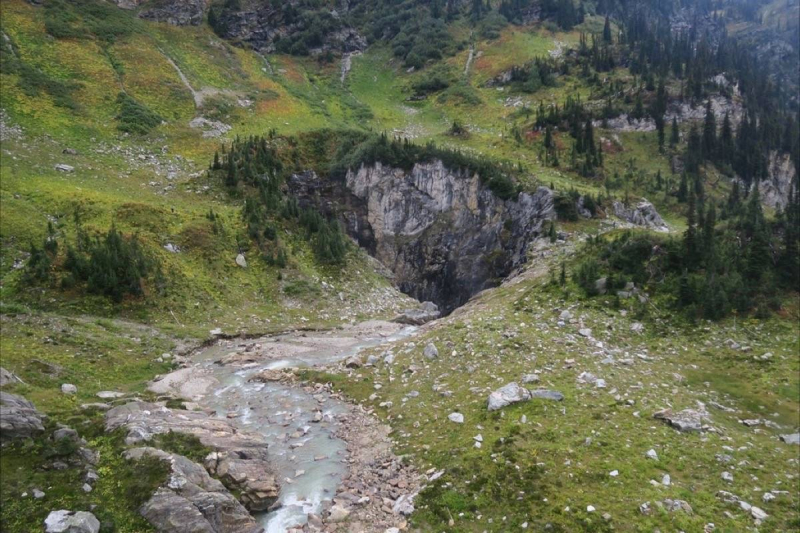
Photo: Clearwater Times Video: CTV News -
The second name among the the largest caves in Canada is Castleguard Cave. It is a limestone cave in the Rocky Mountains of Alberta, Canada, at the north end of Banff National Park. It is Canada's longest cave, with 20,357 meters (66,788 feet) of measured passages (as of 2007), and its fifth deepest, at 384 meters (1,260 ft). Castleguard Cave begins with a gentle ascent and ends beneath the Columbia Icefield.
Castleguard Cave is little in comparison to other renowned caves across the world, but it is well-known among cavers and speleologists all around the world. It's the subject of a movie and a coffee-table book, and it's cited in almost every printed cave reference book.
This is owing, in part, to its breathtaking, secluded alpine setting. Because it is located within a protected area within a national park, motorized ground access is prohibited, and the risk of flooding at the entrance has constrained most explorations to the middle or late winter, cavers must enter it via a 20-kilometer (12-mile) ski with towed sleds or by helicopter. The cave's straight structure and one entrance only add to the sense of isolation. The classic excursion, which takes the shortest path from the entrance to the Ice Plug, covers 9 kilometers (6 miles) of the cave tunnel. Cavers frequently spend four or five days underground, alternating between two underground camps.
The cave formations in most northern caves are sparse, but Castleguard Cave contains several parts with good flowstone and stalactites, as well as a nest of extremely rare cubic cave pearls and large displays of flagged soda straws. Castleguard Cave's back tunnels are the only ones in the world to finish in glacial ice plugs forced into the cave from the sole of a surface icefield.
During glacial eras, the cave may have served as a haven for the isopods and other creatures present in its waters. The amphipod Stygobromus Canadensis, a one-of-a-kind species, was discovered in 1977.
Location: Banff National Park.
Depth: 384m
Length: 20,357m
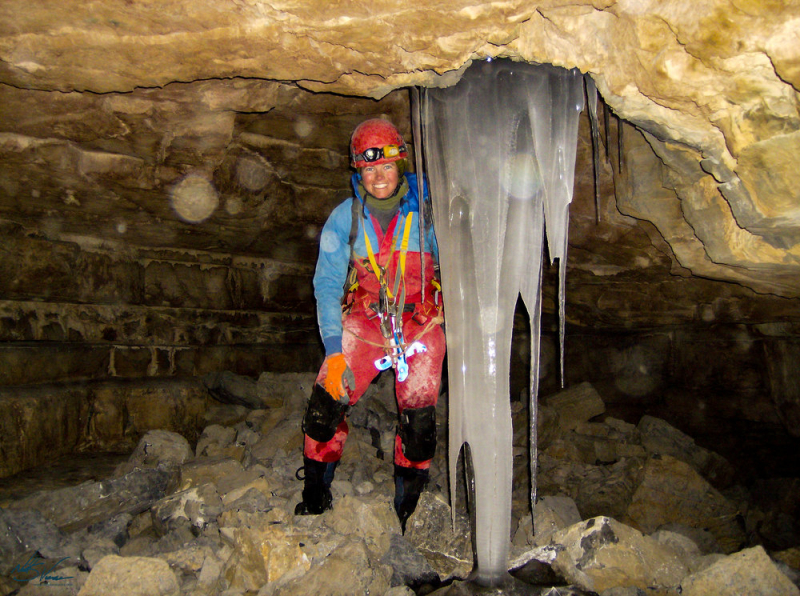
Photo: Nicholaus Vieira Video: Canadian Geographic -
Thanksgiving Cave is a hidden jewel above Head Bay, one of Vancouver Island's lesser-known caves that is difficult to find and even more difficult to explore. Thanksgiving Cave is Vancouver Island's longest and deepest cave. This difficult cave necessitates a lot of climbing and specialized equipment.
Cave pathways are tiny and can lead to deep rooms that appear immediately beneath your feet, so tread carefully. Even though the cave's karst formations are beautiful, they nonetheless have rough edges that indicate minimal water flow. Although the water flow is small, it is sufficient to make the cave feel colder.
The Thanksgiving Cave is the one cave on the island of caves that any decent cover should explore. Caving inside this primarily narrow and picturesque cave provides an adrenaline boost that is well worth the effort. Thanksgiving Cave is one of the most difficult in the area, and faint-hearted visitors should avoid it. Others should go with a knowledgeable guide.
Thanksgiving Cave is in Tahsis, British Columbia, Canada, and is located above Head Bay at the end of Tlupana Inlet. It is located south of Woss Lake Provincial Park and the Height Range. The caves' access road is unmarked and difficult to identify, especially when the entrance is hidden in the bushes. But don't worry, Tahsis is Canada's caving capital. Many guides, such as the Vancouver Island Cave Exploration Group, and maps can assist you in finding it. Because of its proximity to Tlupana Inlet, Tahsis has a lot to offer, including natural vistas, numerous caves, and water sports. Here are some ideas about how to spend your time. Shawzys Charters Ltd. is a fishing charter that will make your visit worthwhile. This Visitor Information Center is a tourist attraction and a naturally lovely site.
This is a leisure site, thus there are plenty of things to do. Hiking is one of them. In Tahsis, there are numerous routes for both short and long treks. When you can appreciate the intriguing rainforest and the view of Tahsis Inlet while hiking on these routes, it's certainly a blessing. Due to the Pacific Ocean winds, kitesurfing and windsurfing are both quite popular on the Tahsis and Muchalaht inlets. Surfing on the Tahsis Inlet is the most thrilling activity available. On the Tahsis and Esperanza Inlets, kayaking and canoeing are possible. During high tide, you can paddle from the Tahsis River and the Leiner Estuary to the inlets.
Following your visit to Thanksgiving Cave, keep in mind that Tahsis offers a plethora of caverns to explore, including Upana Caves and Coral Cave. So you can spend your time exploring the caves' mysteries. Tahsis Inlet also offers scuba diving and snorkeling opportunities. Explore the inlet's deep waters and get up close and personal with the marine life.
The wildlife of the Tahsis is abundant and extremely valuable. Tahsis Inlet attracts a large number of migrating birds, and its marine life is likewise unusual and rare. You can catch Chinook, Coho, Sockeye, Pink, and Chum salmon if you choose to spend your time fishing.
Location: Above Head Bay at the end of Tlupana Inlet, Tahsis, BC, Canada.
Depth: 479m
Length: 8,386m
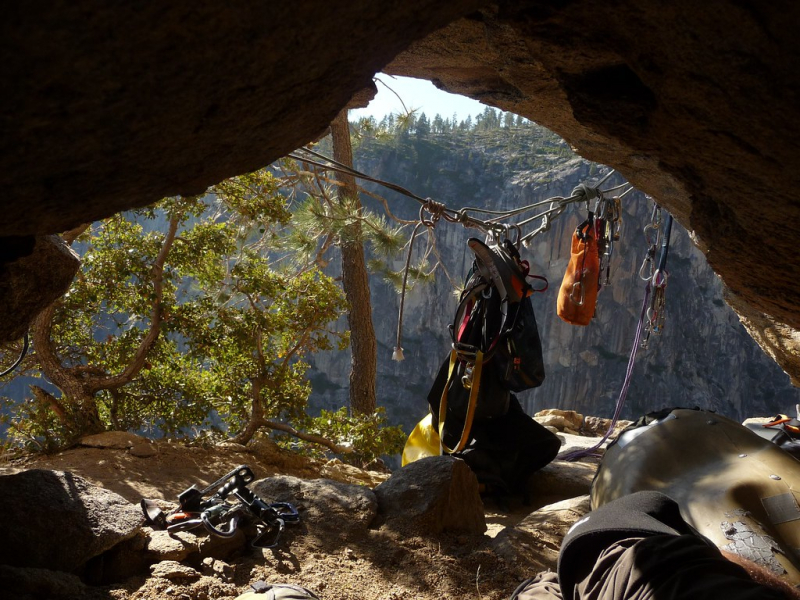
Photo: Flickr Video: NUSKish -
Mount Bisaro boasts Canada's deepest cave network, which a Calgary crew has been exploring.
A group of cave explorers from around the country has set a new record for Canada's deepest cave. Bisaro Anima is a lonely alpine plateau north of Fernie, British Columbia, where the cave is located. During two expeditions during Thanksgiving 2017 and New Year's 2018, they exceeded key goals in their aim to explore, map, and study. In 2012, Henry Bruns of the Alberta Speleological Society planned an excursion to study the Mt. Bisaro plateau. Jeremy Bruns, a caver and project leader, discovered and rappelled into the cave opening at that time. Over thirty cavers from Canada, the United States, and the United Kingdom have been investigating the cave in a series of visits that began with a helicopter ride to the plateau. The cave is now 5.3 kilometers long and 670 meters deep, making it Canada's and the continental United States' deepest caves.
Expedition leader Kathleen Graham set the record depth after using scuba diving equipment to descend into a sump – a water-filled corridor in the cave. "We were astonished and saddened when we discovered the sump a few months ago. Since then, I've been fascinated by picturing what lay beneath the ocean," Graham explained. The explorers had previously explored the cave and determined that it was the third deepest in Canada, at 531 meters. "Based on our knowledge of the geography and geology, the system's depth potential is more than 1000 meters." "With further effort, I believe this cave system might become one of Canada's longest," Bruns said.
Location: The Andy Good Plateau in Alberta and British Columbia, Canada.
Depth: 286m
Length: 6,001m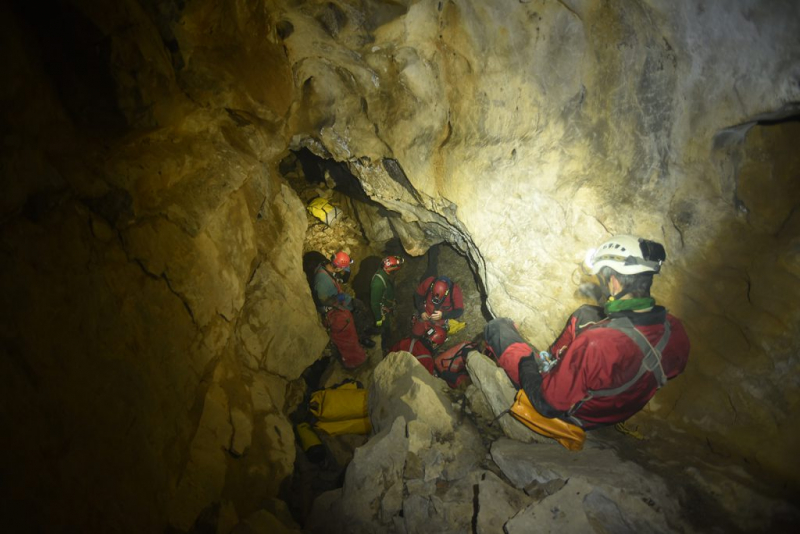
Photo: canadiangeographic.ca 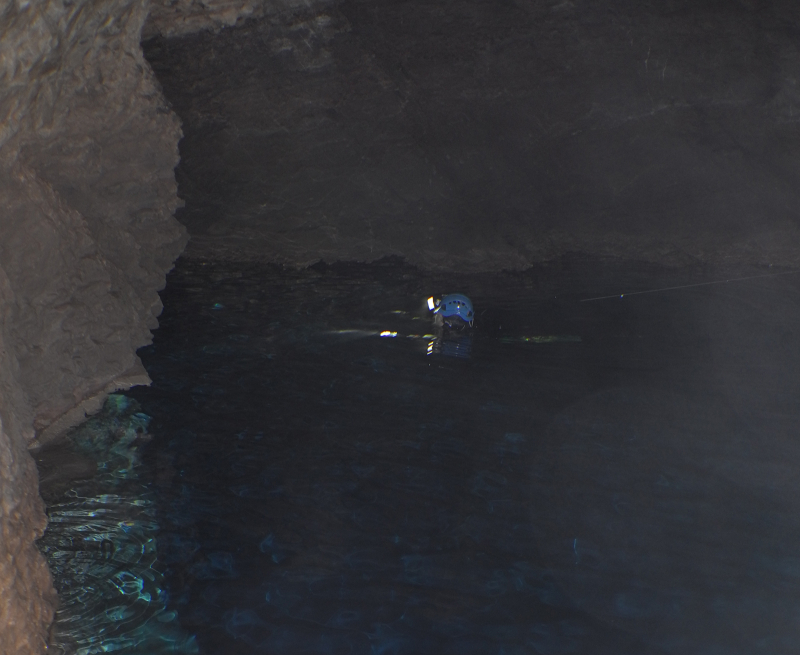
Photo: canadiangeographic.ca -
Rat's Nest Cave is about six kilometers east of Canmore, on the south-facing slope of Grotto Mountain. More than four kilometers of tunnels and a variety of geological and paleontological features, including stalactites, stalagmites, and animal bones deposits, may be found in the subterranean site. The cave is one of the largest caves in Canada that is worthy to explore.
Rat's Nest Cave's heritage significance stems from its unique geological structures and extensive paleontological collection. Rat's Nest Cave was formed by the dissolution of limestone from the Livingstone and Mount Head formations some 350 million years ago, near the end of the Devonian period. During the Late Cretaceous Period, around 85 million years ago, the Front Ranges of the Rocky Mountains began to develop from these formations. Massive pressures squeezed, thrust, folded, and cracked the mountains' granite, forming faults and fissures that eventually became underground rivers of groundwater serving a large subsurface drainage system. One of these streams was the Rat's Nest Cave. As water enlarged the breach in the limestone, the cave's volume grew larger over time.
The Bow Glacier's multiple advances and retreats throughout the late Quaternary epoch, 120-12,000 years ago, changed the alpine environment even more. Massive volumes of water poured into Rat's Nest Cave during glacial retreats, widening tunnels and giving the cave its peculiar geological structure. The Bow Glacier retreated around 12-13,000 years ago, and the tunnels of Rat's Nest Cave slowly drained of water in its wake. The cave's drying allowed travertine formations to form as a result of the interaction of meteoric fluids with calcium carbonate, the major ingredient of limestone. Rat's Nest Cave has been imbued with a particular kind of beauty thanks to its outstanding and varied travertine formations.
The place became home to a diverse range of animal species after Rat's Nest Cave was drained. The cave has uncovered the skeletons of hundreds of species, including paleontological specimens of birds, snakes, fish, and various amphibians. Over 30 animal species' remains have been discovered in the cave. The cave's numerous and diverse paleontological treasures coexist with the site's current richness of insects, arachnids, and worms. The presence of humans in the cave has been confirmed by the discovery of archaic implements dating from around 3000 years ago.
Depth: 245m
Length: 4,003m
Location: beneath Grotto Mountain near Exshaw.
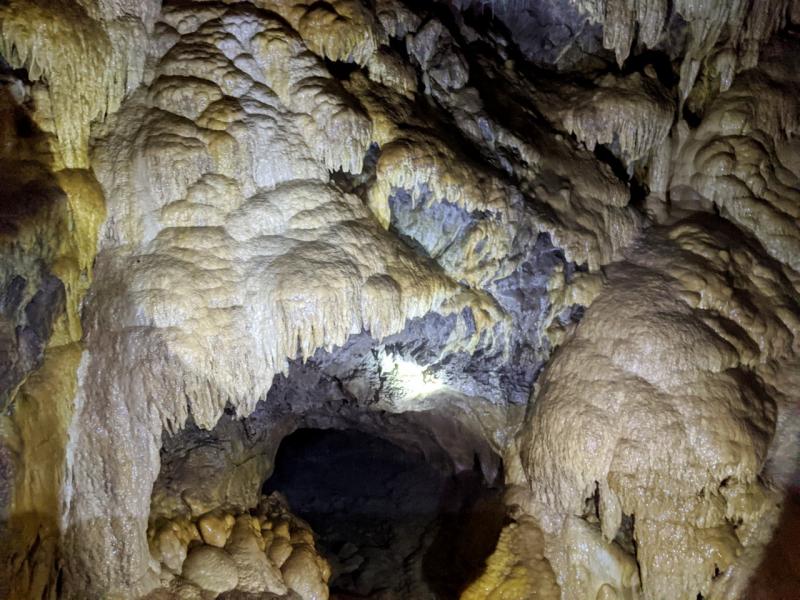
Photo: Off Track Travel 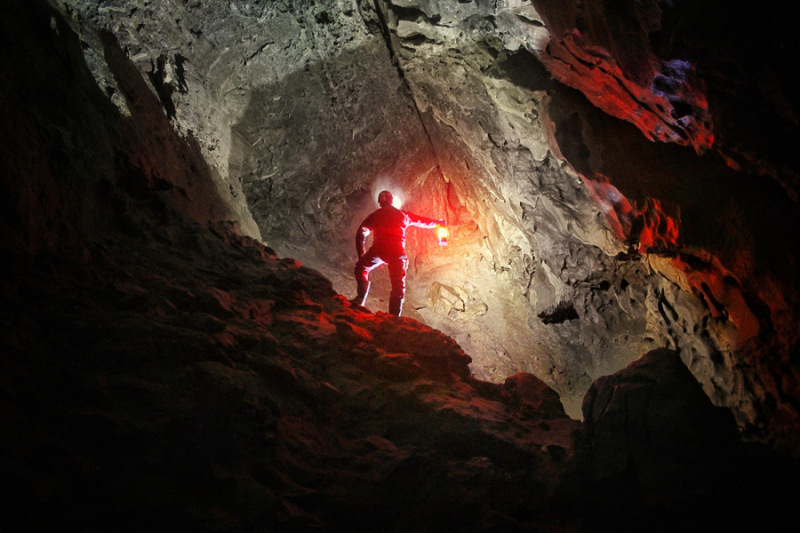
Photo: Dax Justin -
Completing the list of the largest caves in Canada is Arctomys Cave. It was discovered in 1911 and first reported in the Canadian Alpine Journal in 1912 by mountaineer A.O. Wheeler, who had descended to a waterfall at a depth of about 80 meters with Conrad Kain, Byron Harmon George Kinney, and 'Curly' Phillips, stating that "beyond that the going is wet and the exploration was not carried further, as there was no change in the character of the subterranean shaft." Following that, cavers from McMaster University Climbing and Caving Club, Guelph University Caving Club, Alberta Speleological Society, and several visiting British cavers explored and studied the cave to its maximum depth of -522 meters in 1971-73. British and Canadian cavers investigated passages above the entrance in 1983, resulting in the current vertical range of 536 meters. For many years, Arctomys Cave was the deepest known cave in Canada, until Bisaro Anima Cave, at 670 meters, overtook it in 2017. (2,198 ft).
Arctomys Cave is carved out of the Mural Formation limestone of the Early Cambrian Gog Group, which is steeply dipping. The cave's top section (The Endless Climb) falls very steeply, but at a depth of around 400 meters, the cave becomes more horizontal, with various ponds, and eventually finishes at a sump. Despite its considerable depth, the cave only has five pitches that reach a depth of 15 meters. The Straw Gallery includes flowstone and relatively lengthy soda straws, even though the cave is mostly undecorated.
Depth: 536m
Length: 3,496 m
Location: Mount Robson Provincial Park, British Columbia
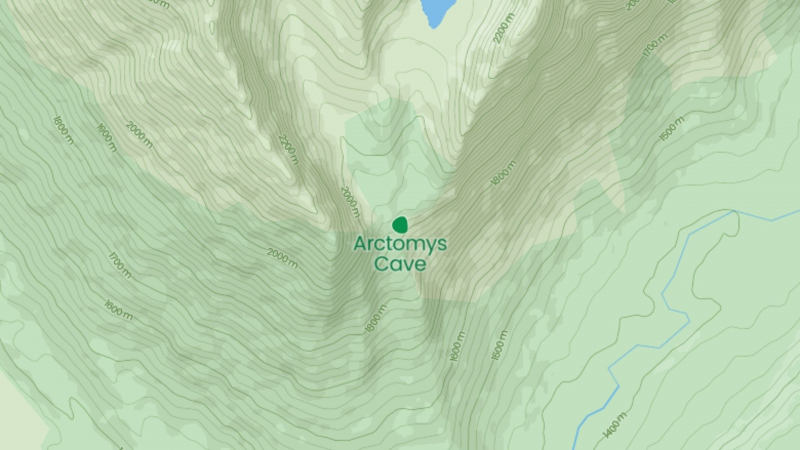
Photo: mapcarta.com 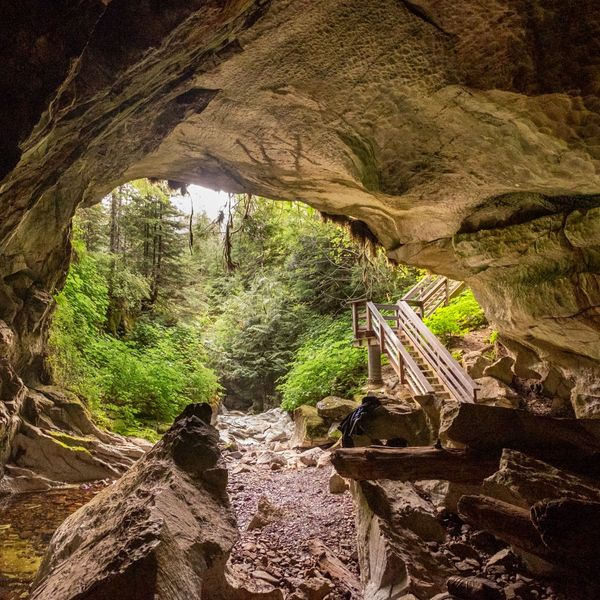
Photo: www.brmbmaps.com








